“Pooh, promise you won't forget about me, ever. Not even when I'm a hundred.”
Pooh thought for a little.
“How old shall I be then?”
“Ninety-nine.”1
I was buying books when I saw the animal. It was standing in an alcove in the wall behind the counter of the Levin Hospice Shop: a place of honour, with a little handwritten notice advising customers to ask if they wanted to see anything. There were two animals on the shelf, in fact— a black velvet dachshund with a squashed face, & the one that first caught my eye, that I took to be a lamb. The shop-lady got the animal down for me. “Oh— it’s amazing.” I said.
You could see it had once been a woolly cream-coloured velvet, but the nap was almost entirely worn away, showing the sturdy weave of the fabric beneath. The right eye looked different from the left: my first guess was that one eye had been lost & replaced with a metal button.2 The floppy ears were black velvet faded to brown, with a formerly-pink velveteen underside, worn through in places.3 The muzzle was also of black velvet, with nose & mouth embroidered on in pink thread. Around the animal’s neck, on a length of peach-coloured two-ply embroidery silk, hung a slightly rusted bell. The price sticker on its rump said $25. Too much. I reluctantly handed it back.
As the shop-lady put the lamb back in the niche, she picked up the dachshund to show me that it had wheels attached— it had once been pulled along on a string— but only on one set of legs: the other pair of wheels had been lost. It was obvious that the two animals had come from the same source. They were of a vintage. The Hospice Shop, more than other hokohoko shops,4 often has visible sets of things. For instance, in the books section there were a number of books about Dundee: Dundee jokes, photos of old Dundee, etc. Also a number of books about London: a Cockney / music hall songbook illustrated by Charles Keeping, a book-&-record combo about London pub music, & an amazing book about The English Pub, which I bought. Op shops are stocked with dead-people’s-things, this we know— but sometimes it’s possible to see the trace of a specific person through their linked possessions, before those possessions scatter into the world.
I was already outside, sitting in the car, closing the door, when a strong feeling came over me. I understood that I had to immediately go back in & buy the animal. (I had almost missed my chance— what was I thinking?) As the transaction went through, I peeled the price sticker from the delicate fabric, gently lest it pull off more velvet. I didn’t want this sacred object to have a number on it. The shop-lady put the animal in a bag at my request, but the bag was too small & its head stuck out the top. I held it to my breast & tucked the head under my jacket lapel— it was raining. I found myself talking to the animal as to a child. Yes, you’re coming with me. There you go. But as we drove away I was stricken with a strong pang of guilt— I had separated the two of them, after how long together? I had taken the lamb, & left the dog behind. But (I reasoned aloud, trying to convince myself) somebody who loved dogs would buy the dog. (Maybe someone with a sentimental attachment to dachshunds?)
I took the animal out of the bag & considered it. The more I looked at its head, the less sure I was that it was a lamb. The head had been squashed slightly, so it took on different aspects depending what angle you looked from. Kev (a former goat farmer) said he thought it was a goat kid: floppy ears “like a Nubian”, small erect tail, & long bell-bottom-shaped legs (though both lambs & kids have those). When we got home I stood it on top of a box, on top of a dresser. Kev said that’s exactly where a real kid would stand— on the highest point.
Me: “Why do you think it’s a baby goat? The stance?”
Kev: “Proportions too. Legs to body.”
Me: “Aren't kids born with horns, though?”
Kev: “Horn-buds. And jelly shoes.”
(He meant the eponychium, the deciduous hoof capsule baby ungulates are born with.)
Symbolically speaking, the difference between sheep & goats is that sheep are goodies & goats are baddies. In the Book of Matthew it tells how when Jesus comes back he’s going to separate the sheep from the goats, placing the sheep at his right hand, the goats at his left.5 The Lord’s my shepherd, lamb of God, etc.; vs. sinister, Satanic, etc… Yet sheep, in our cynical, Godless era, has come to mean someone unthinkingly trusting & obedient. Lambs get slaughtered. Goats are cleverer than sheep & more wilful, though Kev says they respect the electric fence, & only escape if they aren’t getting the correct diet. Behrouz once told me that the Iranians have a derogatory name for Kurdish people: they call them goats. (Because they live in the mountains? Because they are disobedient? It’s the degradation of an ancient association: there’s evidence that goats were first domesticated in the Zagros mountains, 9000 years ago.)
Actually, sheep & goats are not all that different.6 Sheep & goats are closely related enough that you can’t keep them together or they share parasites. Kev says that what happens then is the sheep thrive & the goats sicken, because goats are more vulnerable to worms. Ultimately, New Zealand is a sheep country, though, as England was a sheep country once: England made New Zealand a sheep country. Evidence for lambness.
I send photos to friends. A donkey? (But donkeys have a white muzzle, & prick ears.) A dog? Lying in bed later, looking up at the animal from a different angle, I think that its face looks more like a dog: like Sweep, from Sooty & Sweep.7 I fall asleep & dream of a baby goat— white with a dark muzzle, long shaggy legs— being led on a string to my childhood home. I search Steiff goats. Steiff did make goats, very anatomically correct… nothing like my animal. In fact, I feel that a great deal of this animal’s charm is in its indefinability. It makes me think of the earliest art there is, animal silhouettes on cave walls. It makes me think of the Steiner dolls my German friends had, with three dots for a face. The idea, I think, is that with less definition the child’s imagination is freer to play.
I’m pretty sure the animal was made by hand, not in a factory. The seam-stitching seems to have the evenness of machine-sewing; except for the back-seam that runs from the nape to the tail, where it’s been sewn up after being turned right-side-out & stuffed. The mouth & nose have been embroidered with just a few stitches each, two to make the nose & one to make the mouth. It is stuffed with sawdust, I think: it’s stiff, not squishy, & of medium weight, & there’s one place in the back leg where the cloth has worn right through. (That’s interesting, too— to consider that its insides were once a tree.) But the most amazing thing about it is the wear. The patterns of wear are concentrated around the front of its body: the forelegs, & especially the face & head. (That one scratched eye...) It is least worn in its folds & crevices: around the tail, between the legs, under the neck. In these folds the original fabric can be made out. It is this wear that makes the construction visible. The weave of the underlying cloth is tight & dense, hard-wearing, which makes me think it might be recycled from something like upholstery. Or maybe this fabric is specifically for teddy bear-making? Either way, the engineering has endured intact through a great deal of love: that is, it was well-made.
How old is it, though? At first I thought maybe a hundred years old. (It’s plausible: teddy bears were invented in 1903.) The eyes, however, are plastic, not glass. (In my button collection I have a number of glass teddy bear eyes. Glass endures, the same way buttons are often the last remaining piece of a garment: the bones, as it were.) Plastic eyes came into use in the mid-1950s. Theoretically, then, my animal’s child could still be alive… except for the fact that the animal ended up in the op shop. Maybe the former child has forgotten the animal, or doesn’t care about it any more— but I think loving something as much as this animal has evidently been loved would make you love it forever. It seems fairly likely to me, then, that the animal’s former child is dead, & thus the animal is orphaned. But the child is so present in the animal still! The absent child-owner speaks through the animal, an eloquence of touch. Wear like this is only comparable to a tool— that much hard handling, that much use. (If a child’s work is play, is a toy a tool?)
Lastly there is the mystery of the bell, tied on with a single silk embroidery thread.
The bell & thread match the age of the animal, but that single delicate thread would not endure such hard handling as the animal shows; & besides, the peach-colour of it is pristine, ungrimed. So maybe the bell was tied on afterwards— after the animal had become a shelf ornament rather that a constantly carried companion. Which is interesting: if the animal is still, the bell is silent. But the bell is an offering, an adornment.
When I went to London, I carried a small golden bell in my jacket pocket to channel the energy of the Fool. Upon arrival I had three accidents in as many days, & eventually realised I should take the bell out of my pocket. Suddenly I remember this foreshadowing: last week I took this same jacket, my favourite jacket, to the dry-cleaners. I had to wear other jackets for a week, which made me feel like something emotionally necessary was missing. I felt like someone else, not myself. I said that I felt like a child whose favourite toy is in the washing machine, watching it spin, desperate for it to get clean & dry. (Worried it will smell different afterwards, worried some essential magic might wash away in the process; magic is bodily, a matter of pheromones.)
When I went to pick my jacket up, the feeling got stronger. The tug of imminent reunion felt umbilical. When they handed it over the counter to me, I immediately put it on & sniffed the sleeves— it smelt OK, not too alien— then walked to Nadine’s book launch, feeling like myself again.8 Unity was packed, & it was so hot that I took my jacket off & left it by a chair while I went to get a glass of red wine for Maungarongo. I had just managed to fight my way through to the wine counter when the speeches started. Much later, when the crowd thinned out, I came back to the chair. There were four children sitting in & on it, very close together, their flower-faces turned to the light of a single phone, their sneakers on my pristine jacket.
I have a feeling— & I’m not sure if this feeling is correct, I’m not a parent— that attachment such as this toy demonstrates is not possible in the modern world, with its multitude of seductive digital narratives. It seems to me that deep childhood attachment happens within a fertile empty space that is now so endangered as to be meaningfully extinct. Talk to a kid today & they tell long tales of games & videos, as if those have come to fill the God-shaped hole, that space of story & imagination. If that’s true, it makes me sadder than almost anything else about now.
When a toy becomes what is termed a comfort object it becomes central to the child’s cosmology. (Artist Grayson Perry incorporates his childhood teddy bear Alan Measles into his adult cosmology as a kind of King / Protector deity.) I can’t help thinking of the famous passage from The Velveteen Rabbit: “[Becoming Real] doesn't happen all at once,” said the Skin Horse. “You become. It takes a long time. That's why it doesn't often happen to people who break easily, or have sharp edges, or who have to be carefully kept. Generally, by the time you are Real, most of your hair has been loved off, and your eyes drop out and you get loose in the joints and very shabby. But these things don't matter at all, because once you are Real you can't be ugly, except to people who don't understand.”
I never had The Velveteen Rabbit as a kid. What I had was Winnie-the-Pooh, with its illustrations by Ernest H. Shepard, that managed to make the toys both animate & still toylike. Of all the characters in Winnie-the-Pooh, my animal most resembles the donkey, Eeyore; I eventually work out it’s because Eeyore is the only true quadruped— the only animal in the books who stands on four legs.9
People who write well for children are often still half-child themselves, enough to remember the painful, glorious animism of childhood. (This has nothing to do with cuteness or sentimentality; children start out wild & have to be tamed.) I start thinking about all the children’s books & stories that encourage children to see things through a toy’s-eye view. The Little Tin Soldier. The movie Toy Story. Dogger, by Shirley Hughes, whose illustrations I love. Calvin & Hobbes, wherein Hobbes is a real tiger to Calvin, but a stuffed toy to others.
In The Velveteen Rabbit, Winnie-the-Pooh, & Toy Story, the child growing up is presented as a tragedy from the toys’ point of view (see also Puff the Magic Dragon; Narnia; His Dark Materials, even): the child can’t play any more. For the child, it’s a kind of casting out from Eden, & for the toy, a kind of death. As Christopher Robin tells Pooh at the end of The House at Pooh Corner, “I'm not going to do Nothing any more.”
“Never again?”
“Well, not so much. They don't let you.”10
The nostalgia this home-made object sparks is not for a specific remembered childhood, but for a general resonant pastness. (Made by hand & worn by use: the very definition of wabi-sabi…) The uniqueness & specific materiality of the animal makes me think of prehistoric toys— small animals & people made of clay or bone.11 What am I to this artefact? I guess I'm a sort of museum, because it’s not mine. By taking this orphaned toy home, I take responsibility for its care. (There’s also this: if it were mine— mine from childhood, I mean— I wouldn’t tell you about it. It’s the anonymity, the lack of relationship, that gives me objective distance from its specific sacredness.)
My feeling about this object is not scientific or detached, though; it’s personal. The animal possesses a powerful aura, what my jeweller friend Kelly calls Deep Material Energy, what I would call magic. It feels alive to me, not inert, & this aliveness is tied up somehow with its vulnerability. (Specifically, it’s like a baby, with its high-domed forehead.)
Hard things endure; soft things erode. There seems something fated about this erosion— it’s as if a soft toy, a toy made of fabric or leather, is made to be worn out. It’s designed to be imprinted upon, its purpose is comfort; yet soft things have mortality, a finite lifespan. The Tao Te Ching says young things bend, while old things are brittle & hard— Thus whoever is stiff and inflexible is a disciple of death; Whoever is soft and yielding is a disciple of life. But it’s hard to be soft in a hard world. Harden up, they say in this country, to try & turn boys into men, to cauterise attachments. The truth is, I feel half-child myself most of the time, soft as a mollusc. I haven't worked out how to be properly adult-armoured. (Maybe everyone is still secretly soft, but better at pretending?) To rub against time is to sustain damage— yet I want it to be true that damage is beautiful; I want that beautiful damage to be honoured. Snails have shells, curators have museums; all I can do is tell. I stitch sentences to make a shape. In this ephemeral shrine of words, I sing the animal.
A. A. Milne, The House at Pooh Corner
I later saw that, actually, the eye’s plastic surface had been so thoroughly scratched that it was totally opaque, like a cataract. (What could have scratched the eyes so much? Something metal— belt buckle, overall clips?)
I got this new kupu from a cool Kuia at Nadine’s book launch the other night, as we were standing at the bus stop afterwards chatting about my crocheted Wizard hat & her red velvet turban hat. She showed me her spare hat— a red felt beret with an appliquéd flower— telling me her mokos (grandchildren) got it for her from the hokohoko shop. I knew she meant op shop, but I’d never heard that term before. (Hokohoko means to trade, barter, exchange.)
In The Snow Leopard, Peter Matthiessen goes to Tibet with his biologist friend George Schaller— ‘GS’— who wants to observe the rut of the Himalayan bharal, or blue sheep, to see if they’re the missing sheep-goat link. It’s a very wonderful book, if you can overlook the fact that he left his young children alone just after their Mum died so he could wander around in the snow thinking about Buddhism…
I also remembered this artefact: Polynesian carved dog. (The stance is similar.)
My parents had a friend they privately called Eeyore: a depressed friend, who smoked a lot of cigarettes, & eventually killed himself.
Wikipedia says: “When [Ancient] Greek children, especially girls, came of age, it was customary for them to sacrifice the toys of their childhood to the gods. On the eve of their wedding, young girls around fourteen would offer their dolls in a temple as a rite of passage into adulthood.”
I love the work of Tom Björklund, a prehistoric reconstruction artist who includes many images of hominin children at play. His images consider the possibility that artefacts interpreted as ritual objects— such as the Aurignacian Löwenmensch figurine, a 40,000 year old human figure with a lion’s head carved from mammoth ivory— could in fact be toys. While I was looking at his work, I found this image:
Björklund writes: “Corded ware culture [i.e. Late Neolithic to Bronze Age, c3000 - c2350 BC]...
Sheep and goats were the first farm animals even in Finland. Interestingly sheep were primarily kept for their meat and skin, not wool. Like their wild ancestors and the extant domestic Soay breed, the primitive sheep shed their wool naturally and even the ewes had horns.”





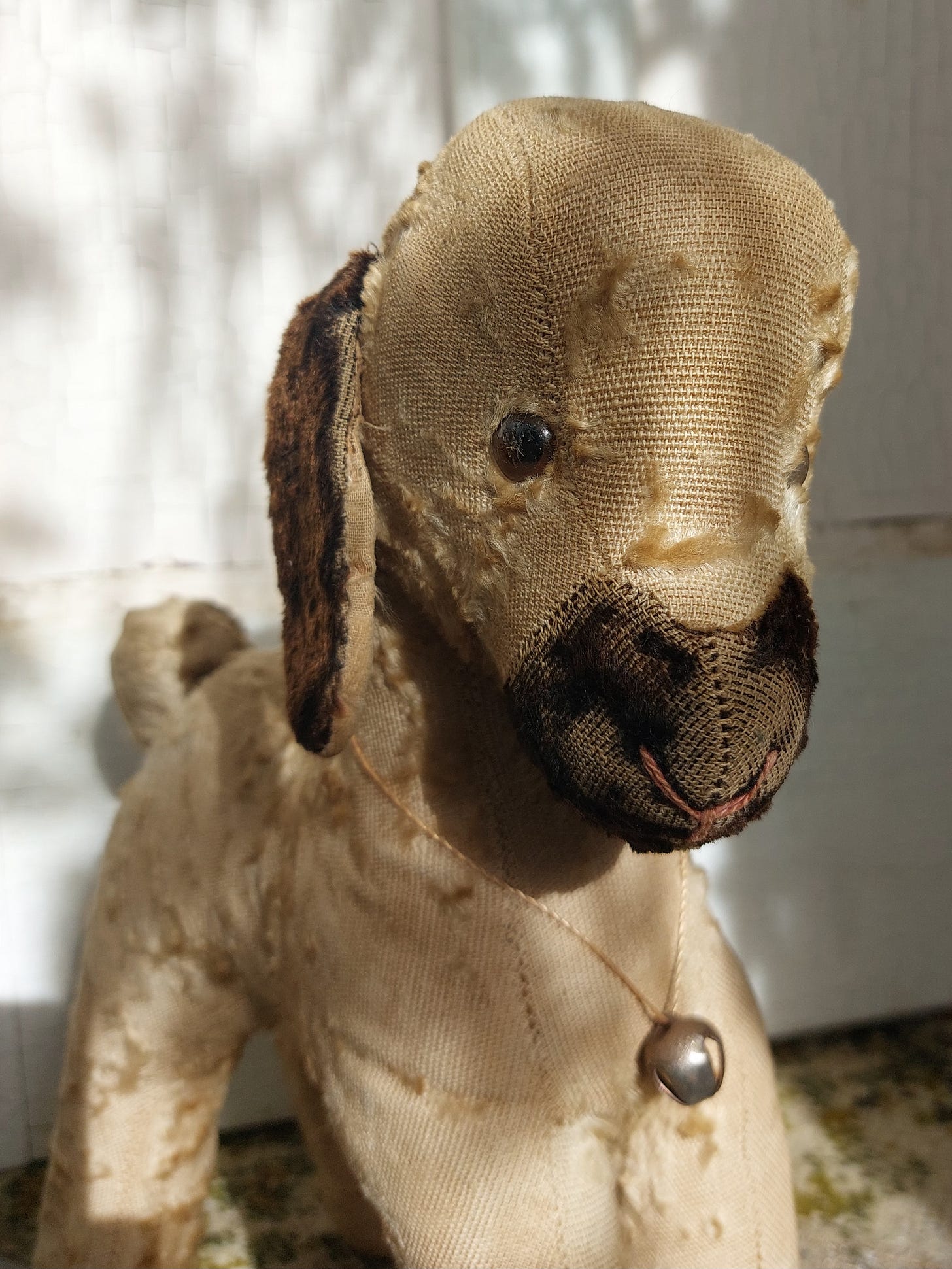


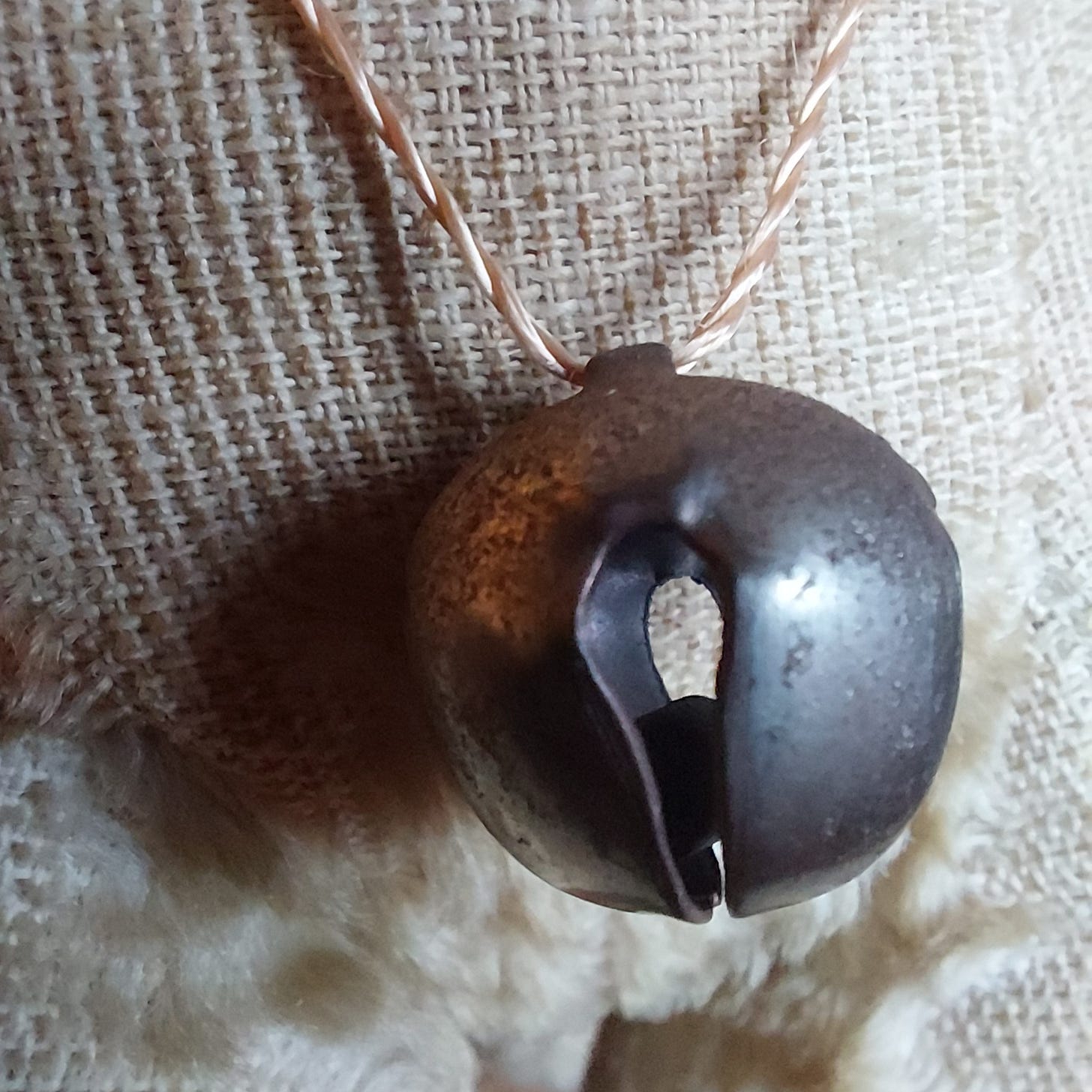
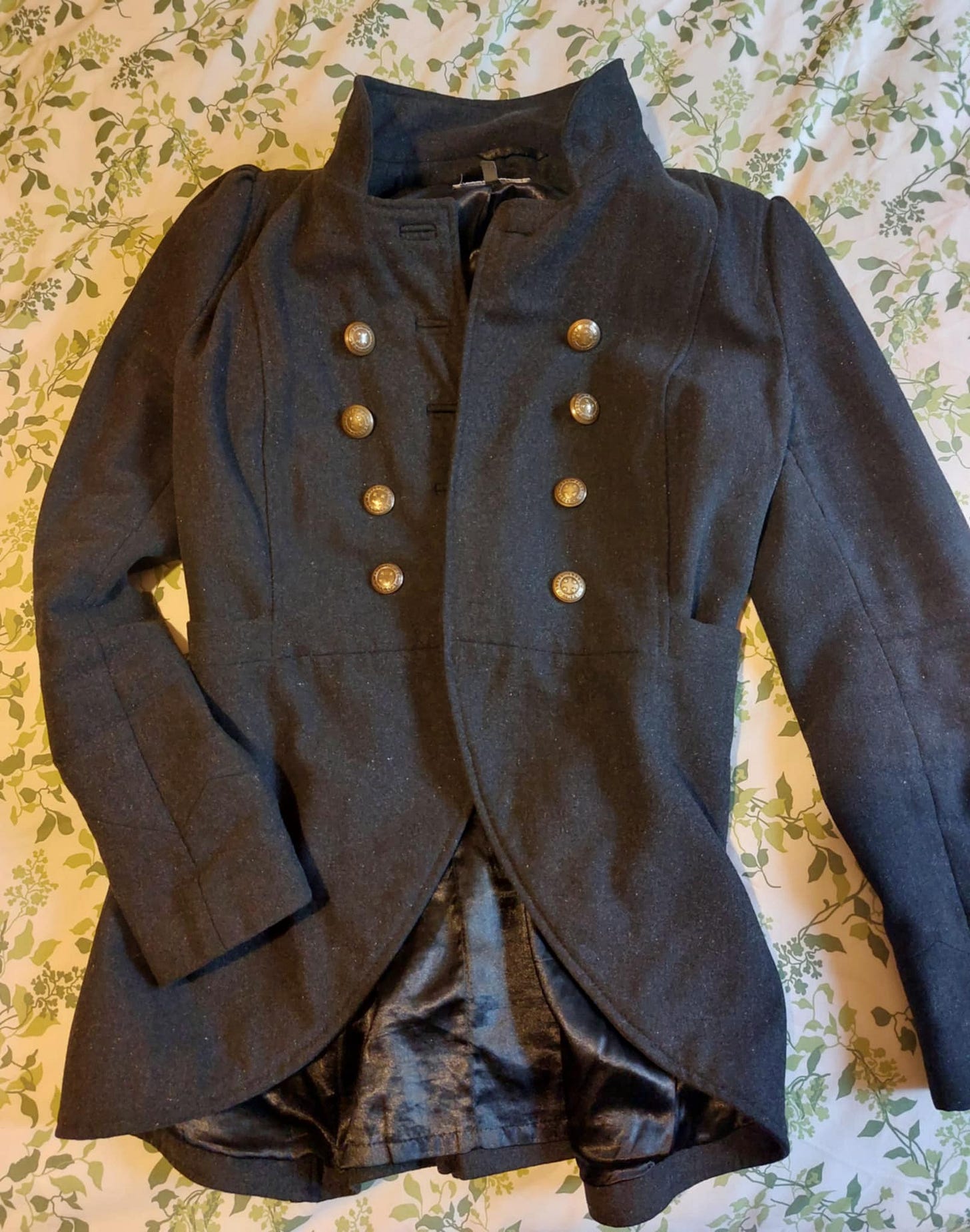
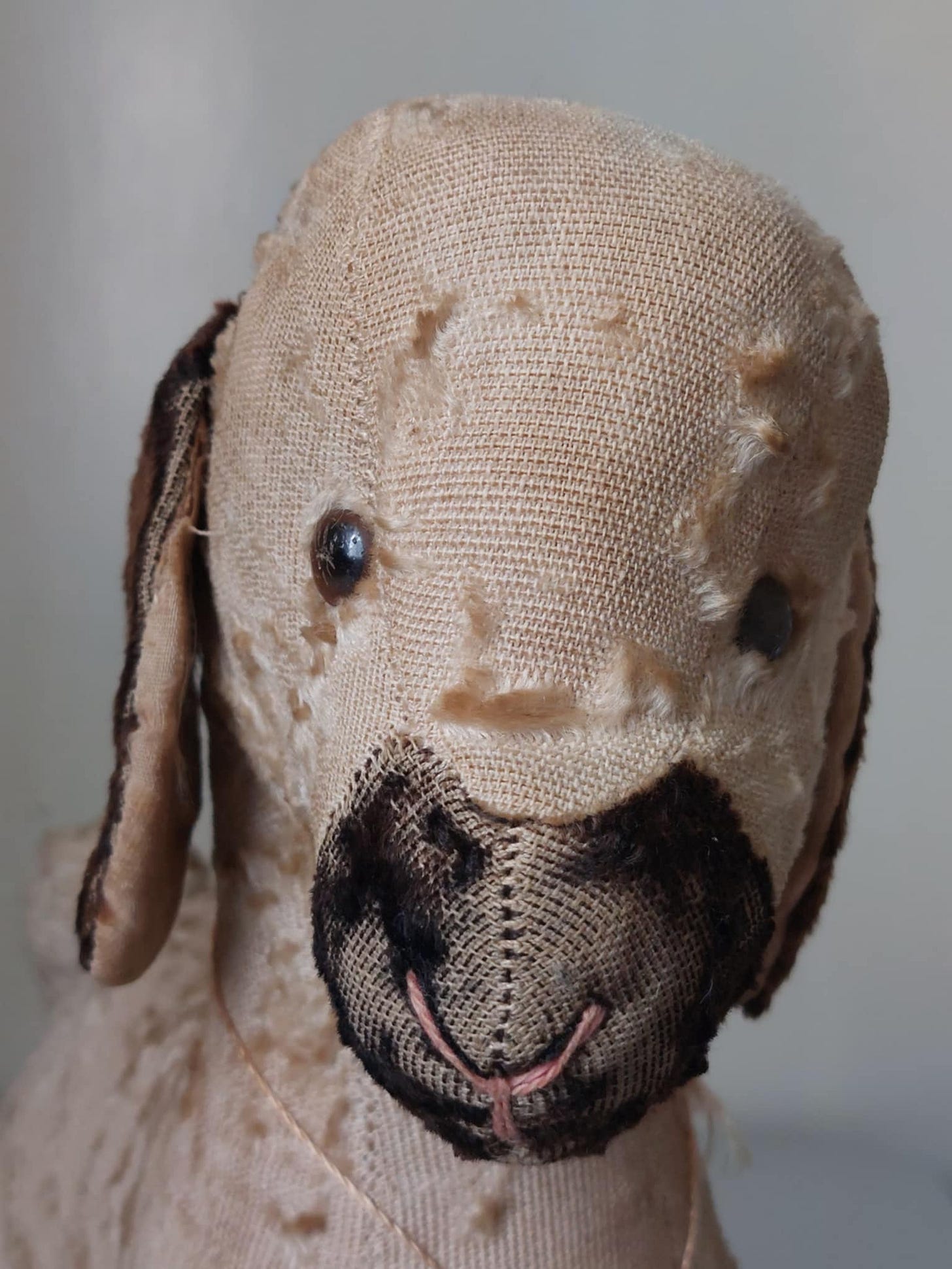
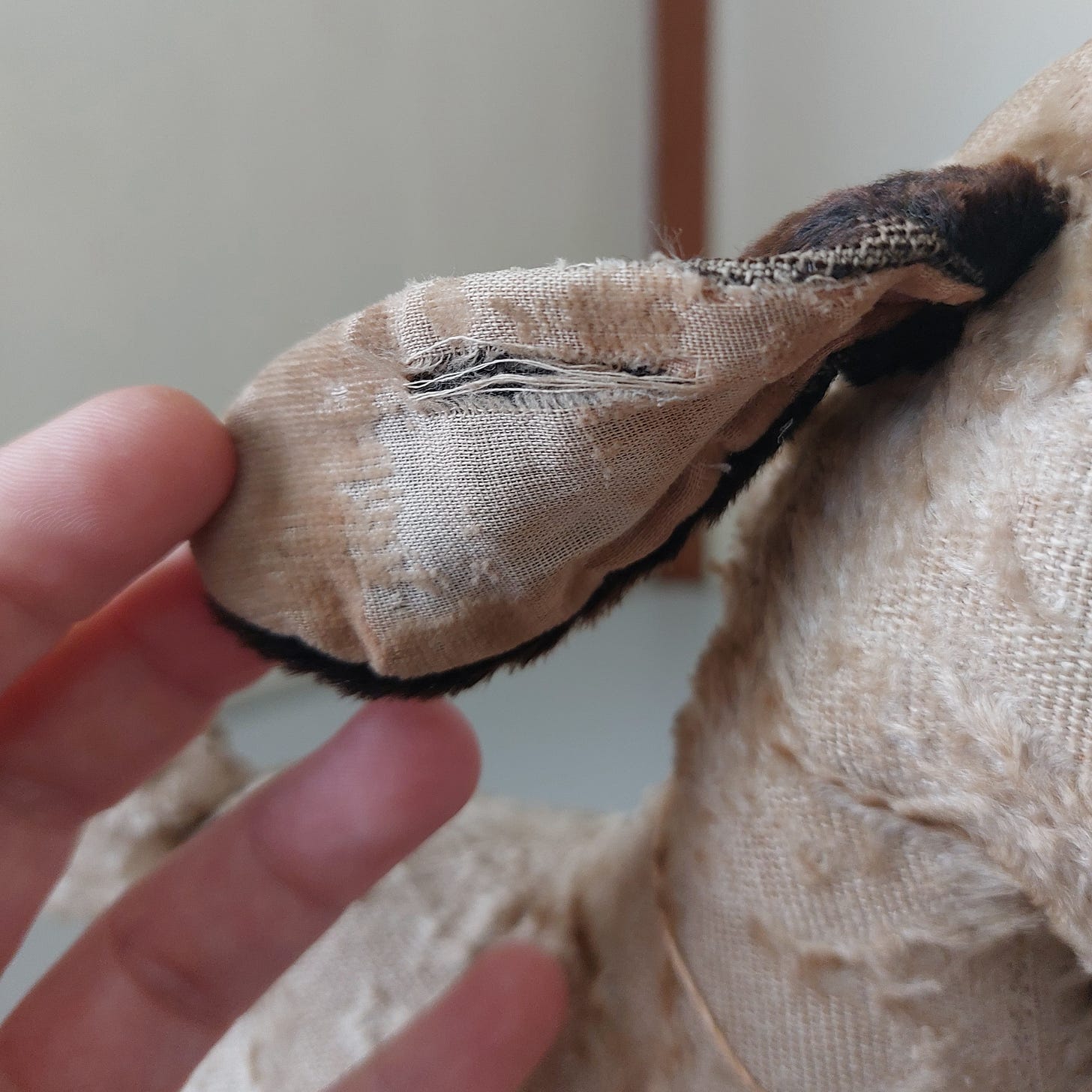

So the book I was buying when I saw the animal was The Songlines, by Bruce Chatwin. I almost didn't buy the book, but then I did, because I did my test of randomly opening the book and reading a few sentences. They were: "On my way out I passed the fat man floating upward in the pool. There was a scar on his stomach, as if the skeleton of a fish had been impressed on it."
There is a (wonderful) book-within-the-book consisting of notes about nomadic peoples from Chatwin's notebooks. (Moleskines-- he dedicates quite a few paragraphs to describing how he had to buy as many as he could because he could only get them at a small stationer's in Paris that then closed down...) This book-within-a-book chapter has many goat & sheep related passages, including this one, witnessing the Quashgai spring migration between Firuzabad & Shiraz:
"A woman in saffron and green rode by on a black horse. Behind her, bundled up together on the saddle, a child was playing with a motherless lamb; copper pots were clanking, and a rooster was tied on with a string.
She was also suckling a baby. Her breasts were festooned with necklaces, of gold coins and amulets. Like most nomad women, she wore her wealth.
What, then, are a nomad baby's first impressions of the world? A swaying nipple and a shower of gold."
There were many other passages I could have quoted, but this was the most specific: the child playing with the lamb.
Rosie, I’ve been away from Substack for a month, and this post was one of the first I read on my return, today, reminding me why I love it here. Oh, that last paragraph! Thank you.
I can feel (I imagine) on my fingertips the burr of the remaining nap and pile of the fabric in your animal’s unworn spaces. And those pink stitches on its muzzle.
The face of your animal reminds me, very strongly, of the the face of the big-enough-to-ride-upon horse I was given for my first birthday (1963, so your animal and mine may be around the same vintage). My Dobbin was – in my memory – leather-covered, though I suppose it was more likely a kind of vinyl. He was creamy white, with a red bridle. I suspect (maybe I mean: I hope) he was filled with horsehair. I don’t remember Dobbin being in our house after I was about ten years old (we moved house around this time); I’ll ask my mother what happened to him.
Ah, and there’s a most beautiful beast I saw at Nairn Street Cottage in Wellington on my first and only visit there, maybe 5 years ago. A wheeled toy perched on one of the beds. Probably a cat? Unclear. But I clicked with him (why ‘him’?), very much. The beauty in the wear; the aura, the ‘resonant pastness’.
PS: I’m sad that I didn’t see you at Nadine’s launch last week (I was hanging out on the fiction side of the shop, but didn’t linger after the speeches). I would’ve said hi.